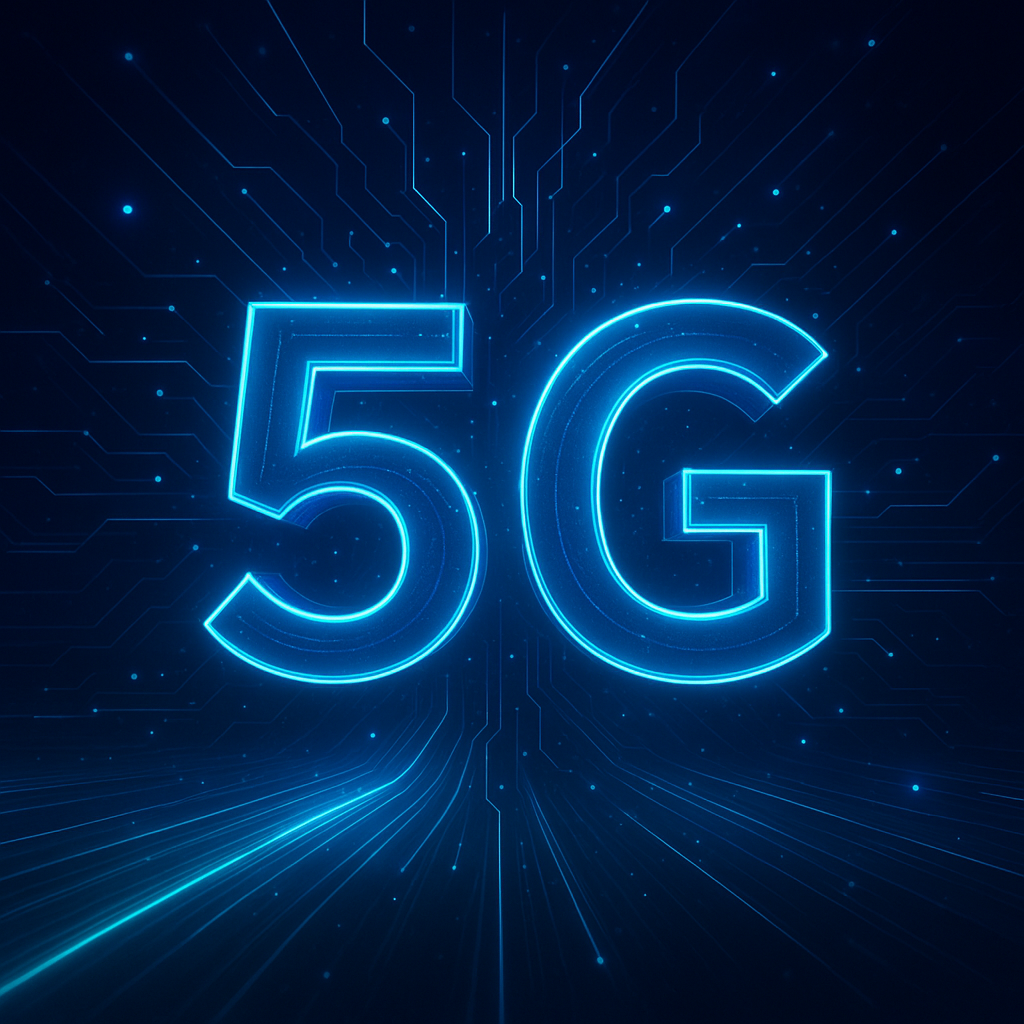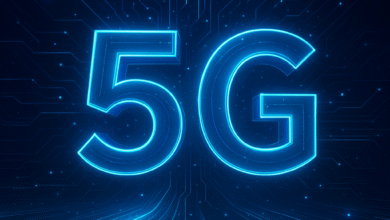
As a Nigerian, you most likely utter a few curse words under your breath every day because of network issues. They’re real, they’re rampant and they’re extremely annoying, 5G is the way out of and away from these issues. Network and network speed has developed from generation to generation (from 1G to 5G), each generation being more developed and efficient than the last, at least in theory. 5G and next-generation networks represent a significant leap forward in telecommunications, promising to transform various industries and impact daily life in numerous ways. 5G can deliver data speeds up to 100 times faster than current 4G networks. This means that tasks like downloading high-definition movies, streaming 4K videos, and sharing large files can be done almost instantaneously. With the ability to handle more devices at once, 5G can support a growing number of connected devices without a loss in quality. This is crucial as the number of smart devices continues to rise. The rollout of 5G infrastructure and the development of 5G-enabled technologies will also create new job opportunities in various sectors.
To understand where one is going, one must know where he is coming from, 5G didn’t just start existing as before it there was 1G, 2G, 3G and 4G. The first generation of networks (1G) was rolled out in the late 1970s, it worked with analog cellular technology and transmission was only through voice communication (no data or texting). It was not the fastest as it only went up to 2.4 kilobytes per second and it faced security concerns due to its lack of encryption.
The second generation (2G) as one might think came with new developments. Rolled out in the early 1990s, it was faster than 1G and it allowed for Voice and basic data services like texting. It used digital cellular technology (GSM, CDMA). It went up to 64 kilobytes per second.
3G came in the early 2000s with its own technology being the Universal Mobile Telecommunications System (UTMS), it also used an updated CDMA version called CDMA 2000. This generation of networks allowed for voice communication, text, video calls as well as mobile internet. It initially went up to 384 kbps but enhanced versions of the network were created and they were as fast as 42 Megabytes per second. This generation is regarded as a turning point in the development of network and network speed due to its significant advancements over its predecessors. It introduced true internet access, it also introduced packet-switched data, allowing users to stay connected to the internet continuously without needing to make a traditional circuit-switched connection.
4G reigned supreme for years between the late 2000s and the early 2010s before the introduction of 5G came to challenge its supremacy. It uses LTE (Long-Term Evolution) technology as well as WiMAX (Worldwide Interoperability for Microwave Access). High-speed data, including HD video streaming, online gaming, and other bandwidth-intensive applications were some of its perks. 4G is lightning fast at its strongest, standard LTE is as fast as 100 Mbps for downloads and 50 Mbps for upload and there’s an upgraded form of LTE, LTE-Advanced, which goes up to 1 Gigabyte per second on downloads. 4G uses IP-based network architecture, making it more efficient for data transmission, it also has low latency, enhancing real-time communication applications (e.g., video calls, online gaming), an impressively smooth mobile broadband experience with faster and more reliable internet connectivity and enhanced security and network capacity. There is a more relatively unknown generation of networks called the interim generation (2.5G, 2.75G), they came out in the late 1990s and used GPRS (General Packet Radio Service) technology for 2.5G and EDGE (Enhanced Data Rates for GSM Evolution) technology for 2.75G. Its data services included web browsing and email.
The evolution from 4G to 5G is a series of technological advancements and paradigm shifts that have been driven by the growing demand for more. More speed, more reliability and a bigger capability for mobile communication etc. The rapid growth in data consumption driven by video streaming, social media, and mobile applications exposed the limitations of 4G networks. 4G networks were increasingly strained to meet the rising demand for higher bandwidth and lower latency. The inability of 4G to perform Network Slicing has also contributed to the increase in demand for 5G. Network slicing allows the creation of multiple virtual networks on a shared physical infrastructure. Each slice can be tailored to specific applications or user requirements, such as low-latency slices for autonomous vehicles or high-bandwidth slices for HD video streaming. This flexibility is a key feature of 5G networks.
5G is fast, ridiculously fast, and this is the base for everything it has over the previous generations of networks, making speed its most prominent feature, its latency rates are also impressively low. 5G networks can offer theoretical peak download speeds of up to 20 Gbps (gigabits per second) under ideal conditions, according to the 3GPP standards. This is significantly higher than the peak speeds of 4G, which typically max out around 1 Gbps. In practical, real-world scenarios, users can expect download speeds ranging from 100 Mbps to over 1 Gbps, depending on various factors such as network conditions, spectrum availability, and the specific deployment (urban vs. rural, indoors vs. outdoors). 5G also improves upload speeds, which are essential for applications like cloud computing, video conferencing, and real-time gaming. Upload speeds can range from 10 Mbps to several hundred Mbps, depending on the spectrum and network configuration. The latency of 5G networks can be as low as 1 millisecond (ms) in ideal conditions, this is a significant improvement over 4G, where latency typically ranges between 30 and 50 ms. Fields such as telemedicine rely heavily on low latency transmissions, doctors may perform surgeries remotely using robotic tools that need instantaneous feedback.
Network slicing is a method of creating multiple, isolated virtual networks (slices) on a shared physical network infrastructure. Each slice is customized to meet the specific needs of different applications, services, or customer segments. These virtual networks operate independently, even though they share the same physical hardware. Network slicing leverages technologies like Software-Defined Networking (SDN) and Network Functions Virtualization (NFV) to create virtual network instances. SDN separates the control plane (the brain of the network) from the data plane (the pathways data travels), allowing for centralized network management. NFV enables network functions (like routing, switching, and firewalls) to run as software on standard servers rather than on dedicated hardware. Each slice can be tailored to meet specific requirements in terms of bandwidth, latency, security, and reliability. Network slices can be created, modified, and deleted dynamically based on real-time demand. This agility allows network operators to efficiently manage resources and provide tailored services without needing separate physical infrastructure for each service type.
5G networks are designed to offer significantly enhanced capacity and connectivity compared to previous generations of mobile networks. This improvement is a fundamental aspect of 5G, aimed at addressing the exponential growth in data traffic and the increasing number of connected devices. 5G utilizes a broader range of spectrum bands compared to previous generations. This includes low-band, mid-band, and high-band (millimeter wave, or mmWave) frequencies, all for varying ranges and functions. The network also is designed to support up to 1 million devices per square kilometer, compared to 4G’s limit of around 100,000 devices. This is critical for the Internet of Things (IoT), where billions of devices will be connected to the network, ranging from smart home appliances to industrial sensors.
The benefits of 5G are nigh innumerable, the use of 5G reduces a lot of complications in human endeavor. The most obvious benefits are speed and low latency and these very benefits serve as the bedrock for the others. Firstly, 5G is useful in healthcare, with its enhanced speed, low latency, increased capacity, and the ability to connect a massive number of devices, 5G can support a wide range of healthcare applications, from telemedicine to remote surgery. The network enables continuous, real-time monitoring of patients through wearable devices and IoT sensors. These devices can track vital signs such as heart rate, blood pressure, glucose levels, and more, sending data instantly to healthcare providers. This allows for timely interventions and personalized care. It can also support high-quality AR and VR experiences that are essential for medical training and education. Medical students and professionals can use VR headsets to simulate surgical procedures and clinical scenarios, gaining hands-on experience in a controlled, virtual environment. It’s also useful in the protection of clients’ data, healthcare data is highly sensitive, and 5G networks offer enhanced security features to protect patient information. Network slicing allows for dedicated, secure communication channels, ensuring that medical data is isolated and protected from unauthorized access.
5G also takes us one step closer to the dreams of living in a modern, smart city. With its capabilities of high-speed connectivity, low latency, increased capacity, and the ability to connect a massive number of devices, 5G can support a wide range of smart city applications. These capabilities make cities more efficient, sustainable, and livable. Smart cities rely heavily on the Internet of Things (IoT) to connect various devices and systems. 5G networks can support up to 1 million devices per square kilometer, making it possible to connect everything from streetlights and traffic signals to public transport and environmental sensors. This high device density is critical for implementing city-wide IoT solutions. Ultra-low latency (as low as 1 millisecond) ensures that connected devices can communicate almost instantaneously. This is essential for real-time applications, such as traffic management, emergency response, and autonomous vehicle operations, where delays can have significant consequences. 5G also enhances the coordination and effectiveness of emergency services. Real-time data from connected devices, surveillance cameras, and drones can provide emergency responders with accurate information, helping them respond more quickly and efficiently to incidents.
5G is pivotal to the future of entertainment and media as well. 5G’s high-speed data transmission capabilities enable seamless streaming of Ultra-High-Definition (UHD) content, including 4K and 8K video. This ensures that users can enjoy crystal-clear visuals without buffering or lag, even on mobile devices. As 5G becomes more widespread, the demand for UHD content is expected to grow, prompting content providers to produce higher-quality videos. 5G facilitates seamless multiplayer gaming experiences by reducing lag and latency. Players can engage in fast-paced online games without delays, enhancing competitiveness and enjoyment. Additionally, 5G can support real-time voice and video communication, making social interactions within games more fluid and engaging. With 5G, media professionals can edit and upload high-definition content on the go. Journalists and content creators can capture video footage and instantly upload it to cloud-based editing platforms, enabling faster content creation and distribution. This is especially valuable for news organizations that need to deliver breaking news quickly.
5G can also contribute to the development of industries, by providing high-speed connectivity, ultra-low latency, and massive capacity, 5G is allowing industries to innovate, optimize operations, and deliver new services. 5G is a key propagator of the fourth industrial revolution. In smart factories, 5G facilitates real-time communication between machines, robots, and central control systems. This connectivity allows for automation, remote monitoring, and control of manufacturing processes, leading to increased efficiency, reduced downtime, and lower operational costs. Healthcare, Entertainment, Sports, Retail, Banking, Agriculture (Smart Farming) are all industries that can and will be heavily impacted by the use of 5G.
In part 2, lingering questions about the downsides of 5G use will be answered, future trends will also be examined.

